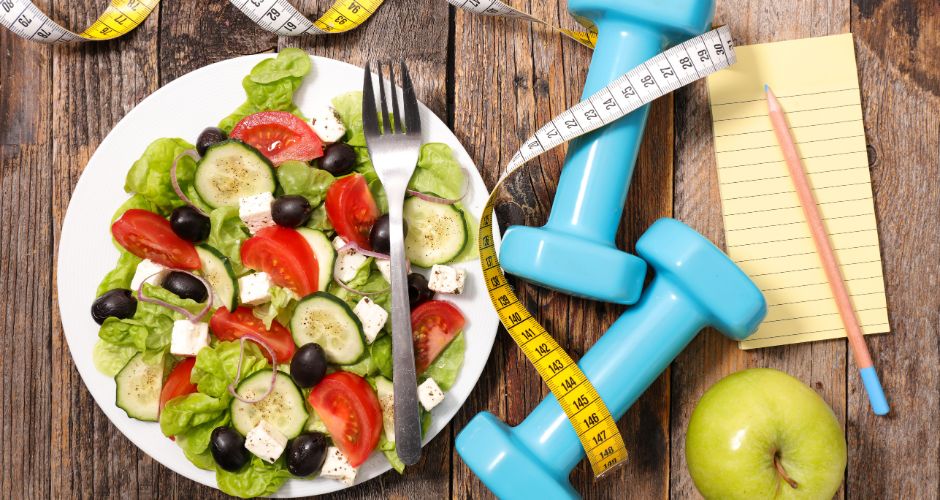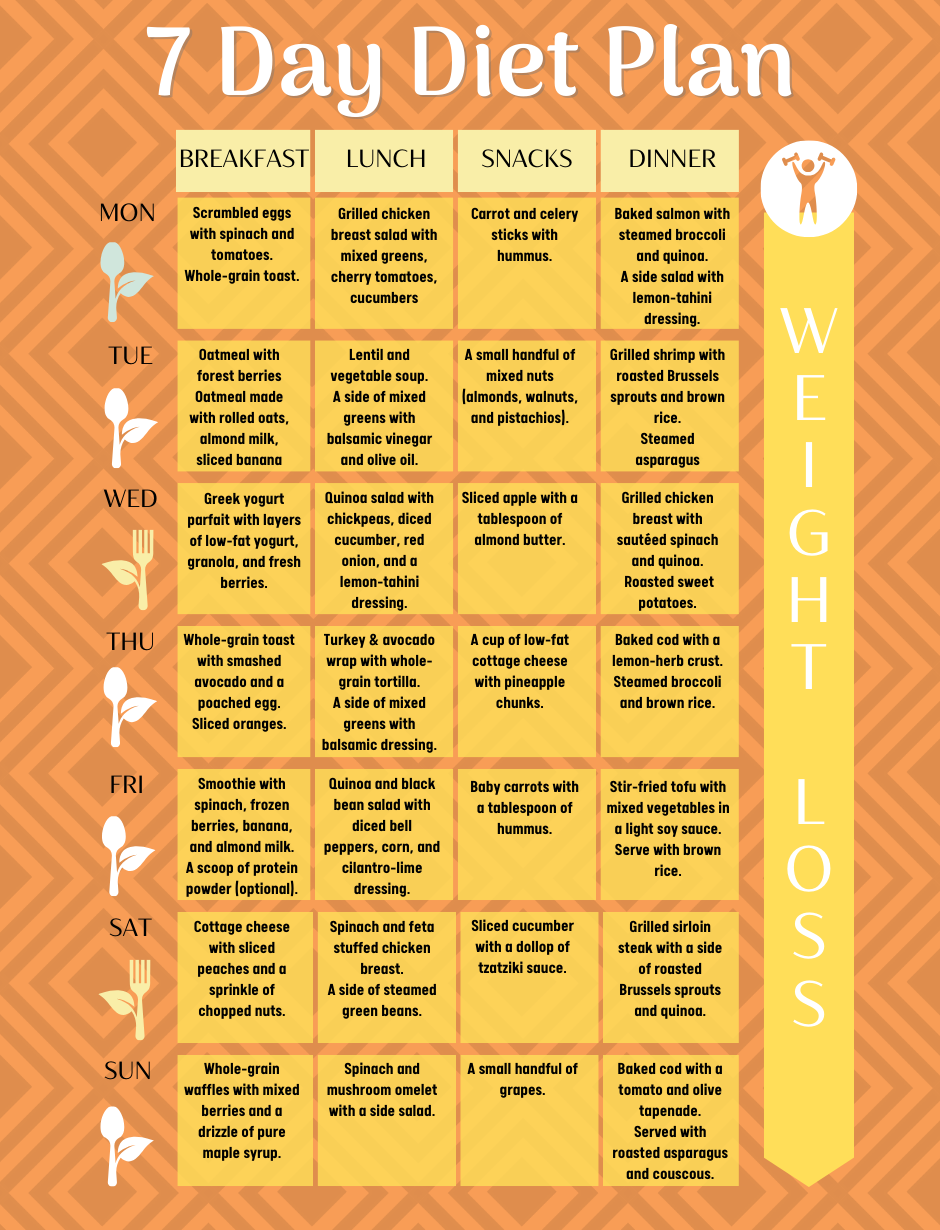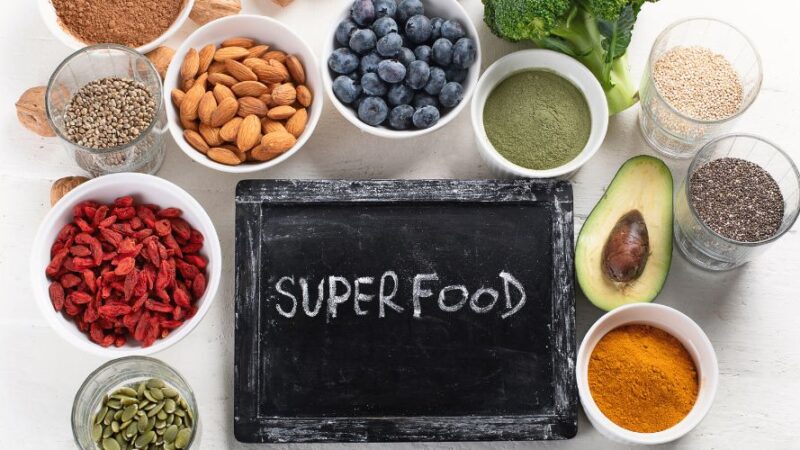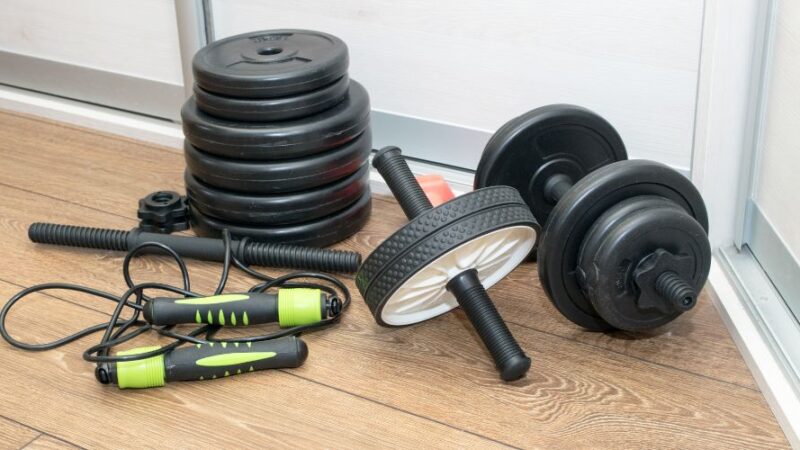7 Day Diet and Exercise Plan for Weight Loss

In a world where weight-related concerns are increasingly common, adopting a balanced diet and incorporating regular exercise into your lifestyle can be the keys to achieving lasting weight loss. This comprehensive guide will delve deep into the world of diet and exercise, providing you with the knowledge and strategies needed to embark on a successful weight loss journey. Whether you’re a female looking for a tailored plan, struggling with hormonal imbalances, or wondering why your diet and exercise efforts haven’t yielded results, this blog has you covered.
7 Day Diet Plan for Weight Loss
Creating a diet plan for fat loss involves making mindful food choices, controlling portion sizes, and ensuring you’re in a calorie deficit. Here’s a sample diet plan that can help you get started on your weight loss journey. Remember to consult with a healthcare professional or registered dietitian before making significant dietary changes, especially if you have any underlying health conditions.

Day 1:
Breakfast:
- Scrambled eggs with spinach and tomatoes.
- Whole-grain toast.
- A small serving of Greek yogurt with berries.
Lunch:
- Grilled chicken breast salad with mixed greens, cherry tomatoes, cucumbers, and a vinaigrette dressing.
Snack:
- Carrot and celery sticks with hummus.
Dinner:
- Baked salmon with steamed broccoli and quinoa.
- A side salad with lemon-tahini dressing.
Day 2:
Breakfast:
- Oatmeal made with rolled oats, almond milk, sliced banana, and a sprinkle of cinnamon.
Lunch:
- Lentil and vegetable soup.
- A side of mixed greens with balsamic vinegar and olive oil.
Snack:
- A small handful of mixed nuts (almonds, walnuts, and pistachios).
Dinner:
- Grilled shrimp with roasted Brussels sprouts and brown rice.
- Steamed asparagus with a squeeze of lemon.
Day 3:
Breakfast:
- Greek yogurt parfait with layers of low-fat yogurt, granola, and fresh berries.
Lunch:
- Quinoa salad with chickpeas, diced cucumber, red onion, and a lemon-tahini dressing.
Snack:
- Sliced apple with a tablespoon of almond butter.
Dinner:
- Grilled chicken breast with sautéed spinach and quinoa.
- A small side of roasted sweet potatoes.
Day 4:
Breakfast:
- Whole-grain toast with smashed avocado and a poached egg.
- Sliced oranges.
Lunch:
- Turkey and avocado wrap with whole-grain tortilla.
- A side of mixed greens with balsamic dressing.
Snack:
- A cup of low-fat cottage cheese with pineapple chunks.
Dinner:
- Baked cod with a lemon-herb crust.
- Steamed broccoli and brown rice.
Day 5:
Breakfast:
- Smoothie with spinach, frozen berries, banana, and almond milk.
- A scoop of protein powder (optional).
Lunch:
- Quinoa and black bean salad with diced bell peppers, corn, and cilantro-lime dressing.
Snack:
- Baby carrots with a tablespoon of hummus.
Dinner:
- Stir-fried tofu with mixed vegetables in a light soy sauce.
- Serve with brown rice.
Day 6:
Breakfast:
- Cottage cheese with sliced peaches and a sprinkle of chopped nuts.
Lunch:
- Spinach and feta stuffed chicken breast.
- A side of steamed green beans.
Snack:
- Sliced cucumber with a dollop of tzatziki sauce.
Dinner:
- Grilled sirloin steak with a side of roasted Brussels sprouts and quinoa.
Day 7:
Breakfast:
- Whole-grain waffles with mixed berries and a drizzle of pure maple syrup.
Lunch:
- Spinach and mushroom omelet with a side salad.
Snack:
- A small handful of grapes.
Dinner:
- Baked cod with a tomato and olive tapenade.
- Served with roasted asparagus and couscous.
Remember to drink plenty of water throughout the day and listen to your body’s hunger and fullness cues. This meal plan provides a balanced mix of lean proteins, whole grains, healthy fats, and fiber-rich fruits and vegetables, all of which can support your weight loss goals. Adjust portion sizes and food choices based on your individual needs and preferences, and consider consulting with a healthcare professional or registered dietitian for personalized guidance.
7 Day Exercise Plan for Weight Loss

An effective exercise plan for weight loss combines cardio (aerobic) exercises, strength training, and flexibility exercises. The key is to create a balanced routine that helps you burn calories, build lean muscle, and improve overall fitness. Here’s a sample 7-day exercise plan to get you started on your weight loss journey. Always consult with a healthcare professional before starting a new exercise program, especially if you have any underlying health conditions.
Day 1: Cardio
- Exercise: 30 minutes of brisk walking or jogging.
- Strength Training: Bodyweight exercises (push-ups, squats, lunges) – 3 sets of 12 reps each.
- Flexibility: Stretching exercises for major muscle groups (quads, hamstrings, calves, chest, shoulders, and back) – Hold each stretch for 15-30 seconds.
Day 2: Strength Training
- Exercise: 30 minutes of strength training with dumbbells or resistance bands. Focus on all major muscle groups (chest, back, legs, shoulders, and core).
- Cardio: 15 minutes of high-intensity interval training (HIIT) – alternate 30 seconds of intense exercise (e.g., jumping jacks, burpees) with 30 seconds of rest.
- Flexibility: Stretching exercises to improve flexibility in the areas worked during strength training.
Day 3: Cardio
- Exercise: 30 minutes of cycling or spinning.
- Strength Training: Bodyweight exercises (planks, bridges, tricep dips) – 3 sets of 12 reps each.
- Flexibility: Stretching exercises for the lower body (quads, hamstrings, calves).
Day 4: Rest or Active Recovery
- Take a day to rest or engage in light activities like walking, yoga, or swimming for relaxation and recovery.
Day 5: Cardio
- Exercise: 40 minutes of swimming or water aerobics.
- Strength Training: Use resistance bands or machines for 30 minutes to target upper and lower body muscles.
- Flexibility: Stretching exercises for the upper body (shoulders, chest, arms, and neck).
Day 6: Strength Training
- Exercise: 30 minutes of strength training with a focus on compound movements (deadlifts, squats, bench press).
- Cardio: 15 minutes of moderate-intensity cardio (elliptical, brisk walking).
- Flexibility: Stretching exercises to improve flexibility in the areas worked during strength training.
Day 7: Active Rest
- Engage in light activities like walking, cycling, or yoga to keep your body active without intense workouts.
Tips for Success:
- Gradually increase the intensity and duration of your workouts as your fitness level improves.
- Stay consistent with your exercise routine, aiming for at least 150 minutes of moderate-intensity aerobic activity or 75 minutes of vigorous-intensity aerobic activity per week, as recommended by health guidelines.
- Combine exercise with a balanced diet for the best results in achieving your weight loss goals.
- Listen to your body, and don’t push yourself too hard. Rest and recovery are essential parts of any fitness plan.
Remember that the most effective exercise plan is one that you enjoy and can sustain over the long term. Adjust the plan to fit your preferences and fitness level, and consult with a fitness professional if you have specific goals or concerns.
Role of Diet and Exercise in Weight Loss:
The role of diet and exercise in weight loss is pivotal, and understanding this relationship is fundamental to achieving your weight loss goals. Weight loss occurs when you burn more calories than you consume, creating what’s called a calorie deficit. Both diet and exercise play distinct yet interconnected roles in helping you achieve and maintain this calorie deficit. Let’s dive deeper into their roles:
1. Diet:
Calorie Control: Your diet is the primary driver of calorie intake. To lose weight, you need to control the number of calories you consume. This involves being mindful of portion sizes and choosing foods that are nutrient-dense but not calorie-dense. For example, vegetables, lean proteins, whole grains, and fruits are excellent choices.
Macronutrient Balance: In addition to calorie control, the balance of macronutrients (proteins, carbohydrates, and fats) is crucial. A well-balanced diet ensures you get essential nutrients while supporting your weight loss goals. Protein, in particular, helps with muscle preservation and satiety.
Food Quality: The quality of your food choices matters. Processed foods high in sugars, unhealthy fats, and additives can contribute to weight gain and negatively affect your health. Opt for whole, unprocessed foods as much as possible.
2. Exercise:
Calorie Expenditure: Exercise helps you burn calories, contributing to the calorie deficit necessary for weight loss. Cardiovascular exercises like running, cycling, and swimming are excellent for calorie expenditure.
Lean Muscle Mass: Strength training exercises, including weight lifting and bodyweight exercises, help build and preserve lean muscle mass. Muscle burns more calories at rest than fat, so having more muscle can increase your resting metabolic rate, aiding in long-term weight management.
Metabolism Boost: Regular exercise can boost your metabolism, meaning your body becomes more efficient at burning calories even when you’re not active. This metabolic boost can help with weight loss and maintenance.
Appetite Regulation: Exercise can help regulate appetite and reduce cravings. It may also improve insulin sensitivity, making it easier for your body to process glucose and manage hunger.
Synergy: Diet and exercise work in synergy. A healthy diet provides you with the energy and nutrients needed to perform well during exercise, while exercise enhances the effectiveness of your diet by burning calories and improving body composition.
The Takeaway:
In the quest for weight loss, it’s crucial to strike a balance between diet and exercise. Neither should be viewed in isolation. Instead, they should complement each other to create the calorie deficit necessary for weight loss while preserving muscle and supporting overall health. Remember that consistency is key, and adopting sustainable lifestyle changes in both diet and exercise is more effective in achieving and maintaining weight loss than quick fixes or extreme approaches. Always consult with a healthcare professional or registered dietitian before making significant changes to your diet or exercise routine, especially if you have any underlying health conditions.
Conclusion
As we wrap up this 7-Day Diet and Exercise Plan for Weight Loss, it’s important to recognize the incredible commitment you’ve shown to your health and well-being over the past week. This plan is not just a quick fix but a stepping stone to a healthier lifestyle that can lead to sustainable weight loss and improved overall fitness.






2 thoughts on “7 Day Diet and Exercise Plan for Weight Loss”